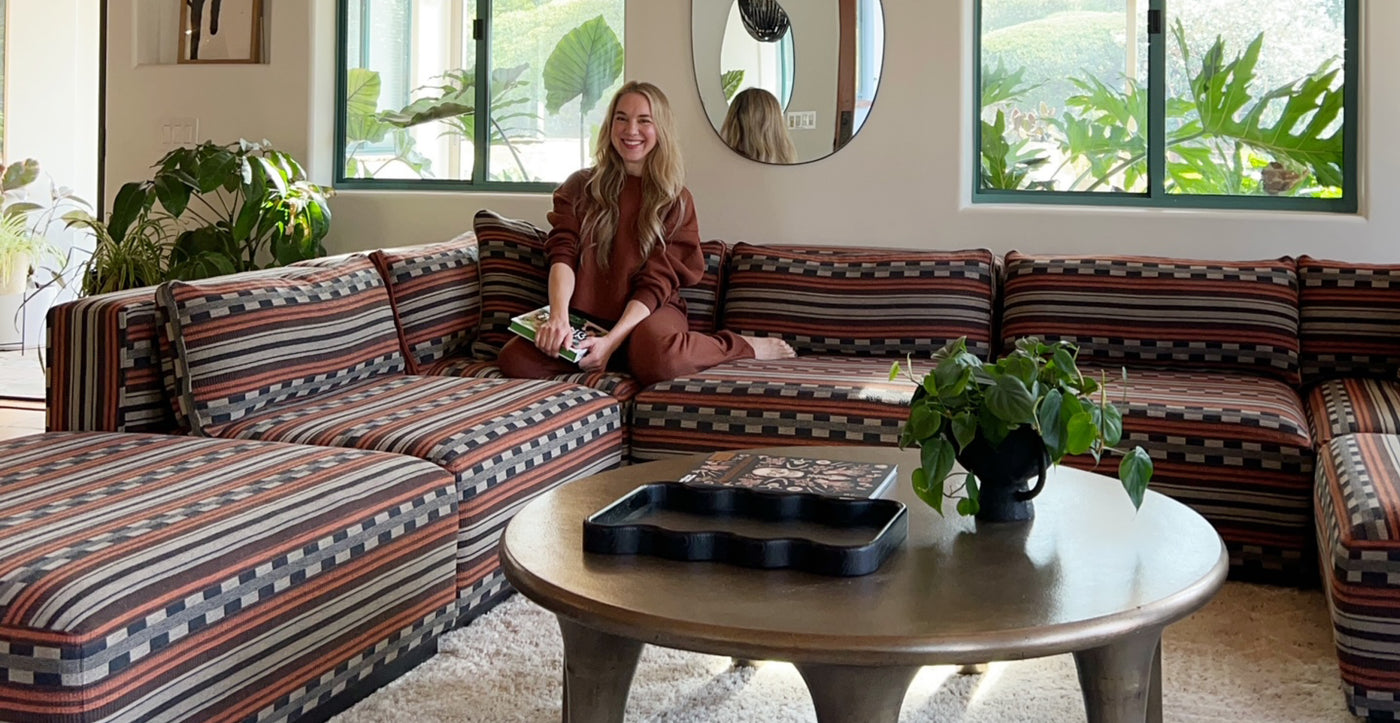Expert rug advice from interior designer Amy Pigliacampo
1. What is your philosophy when it comes to creating a home?
My overriding philosophy is subtraction. I am by no means a minimalist but most homes have too much going on; too many colors, textures, styles, furniture, objects etc. All of our renovation projects have a similar goal; find out what the house wants to be, then carefully edit the spaces by removing things that don't make sense, simplifying and updating the elements that remain, and being thoughtful about new additions.
2. At Enkay, we honor and respect our artisans, appreciating the natural materials they use to craft our products. How do you prioritize environmental and community concerns, both personally and in your business?
It's such a tricky question for our industry. I really love vintage and my personal goal is to have 1/3 of my client's furnishings sourced from existing pieces. I also prefer to have furniture made by local sources rather than shipped from overseas when possible. Oftentimes, it’s more cost-effective for the client but it takes some educating to help them understand what is happening with all of the cheap furniture they see online. Most people are unaware of the waste and pollution that go into cheap manufacturing and my ideal clients don't mind spending more money to ensure that their furniture and accessories are made ethically. Packaging can also be overwhelming for materials and furnishings and I take note of the vendors that do a better job and try to lean on those sources whenever possible.
3. In your opinion, what role does a rug play in a home?
It's no secret that rugs are my favorite home category; I almost always start with the rug and build on top of that. The way a rug looks and feels is everything for the space, they are the "art" in my mind. You can elevate almost any piece of furniture with the right rug. It's also the piece that defines the space and makes everything feel connected, visually and literally, anchoring the furnishings and providing a wonderful texture underfoot.
4. You’ve designed projects for young families. With that in mind, when looking for the perfect rug, what key characteristics do you consider?
I always encourage wool or a wool blend. I wouldn't want my own kids rolling around on something synthetic or breathing in those off-gases. Wool is also naturally stain-resistant and super durable over time. If you have little ones I might encourage some variation in the rug or a darker shade so that it doesn't become a stress point. Kids and pets can be messy so depending on the situation I may lean into those variegated or darker colors in common areas but feel comfortable with whites in a bedroom where no one is wearing their shoes.
5. Do you have any sizing tips for people purchasing their first custom-made rug?
Plan out your space and don't be afraid to size up; nothing makes me more crazy than a rug that is too small for the space. Most of the time, I like rugs to be about 20-25% larger than the dominant furniture piece, usually a bed or a sofa, sometimes more.
It's really easy to sketch this out on graph paper and get a sense of how it will look. There aren't too many hard and fast rules but it's always best to use a rug pad for safety and added comfort. Make sure that portions of your furniture are resting on the rug, check that you have at least 12" of flooring visible on all sides (too large isn't great either!) and try to have some contrast between your furniture and the rug, not only in texture but in color tone as well this way you’ll avoid things looking flat and drab.


